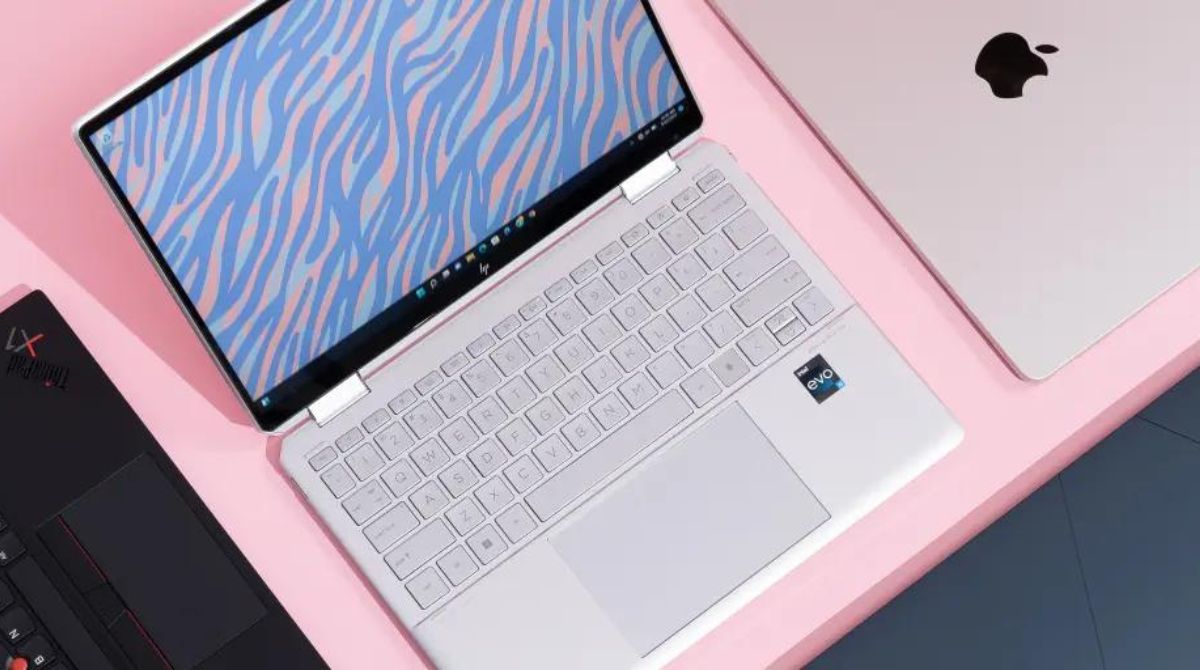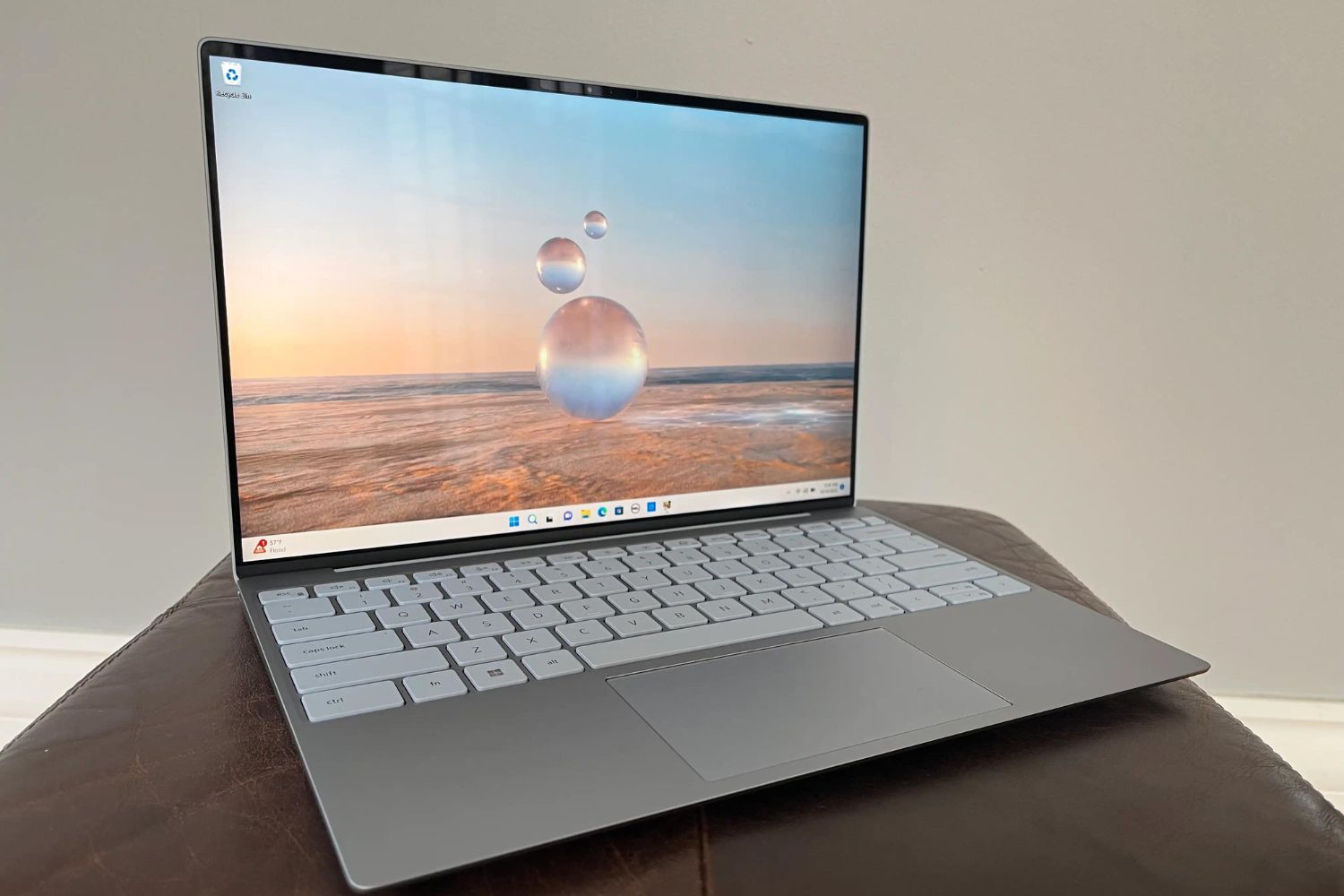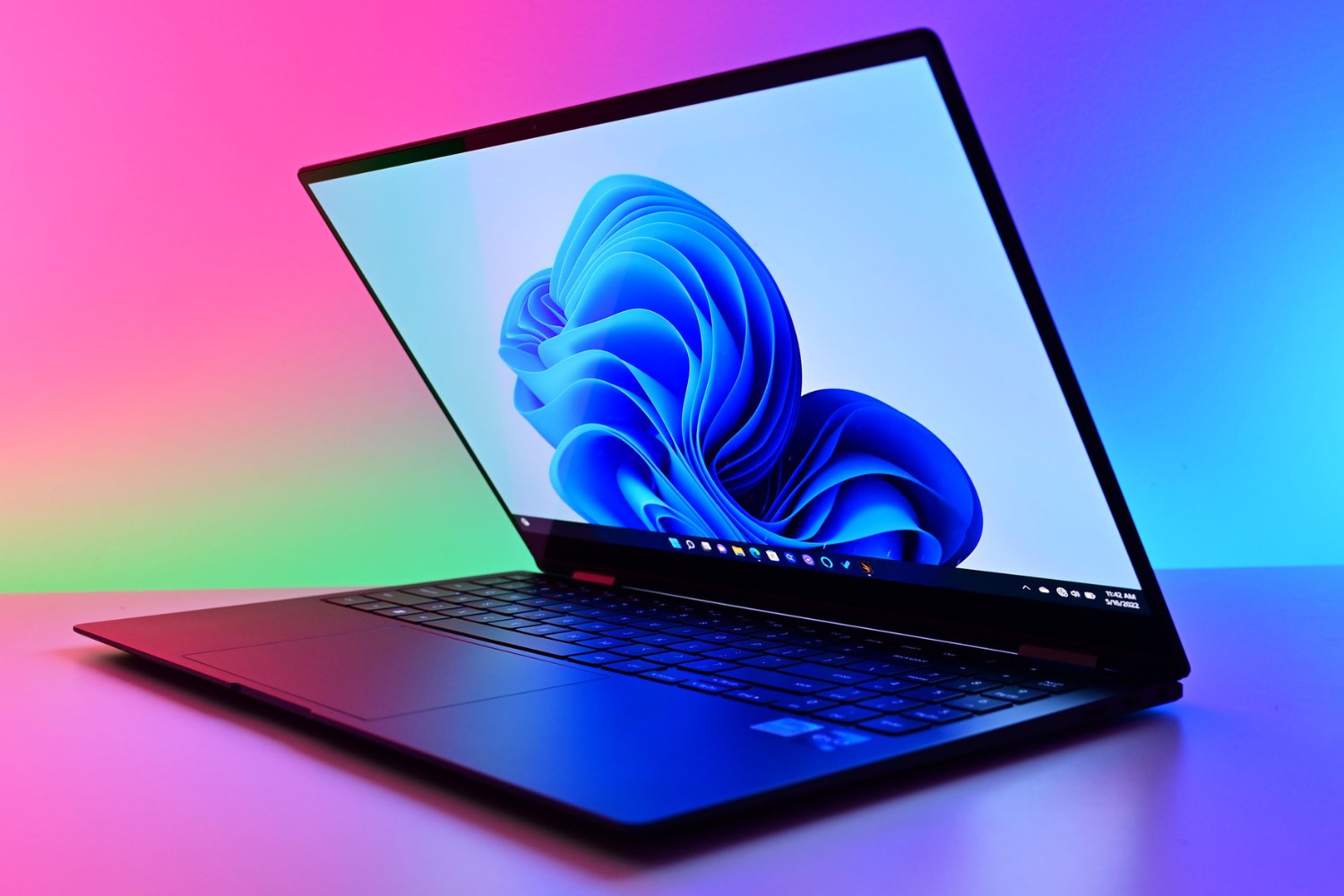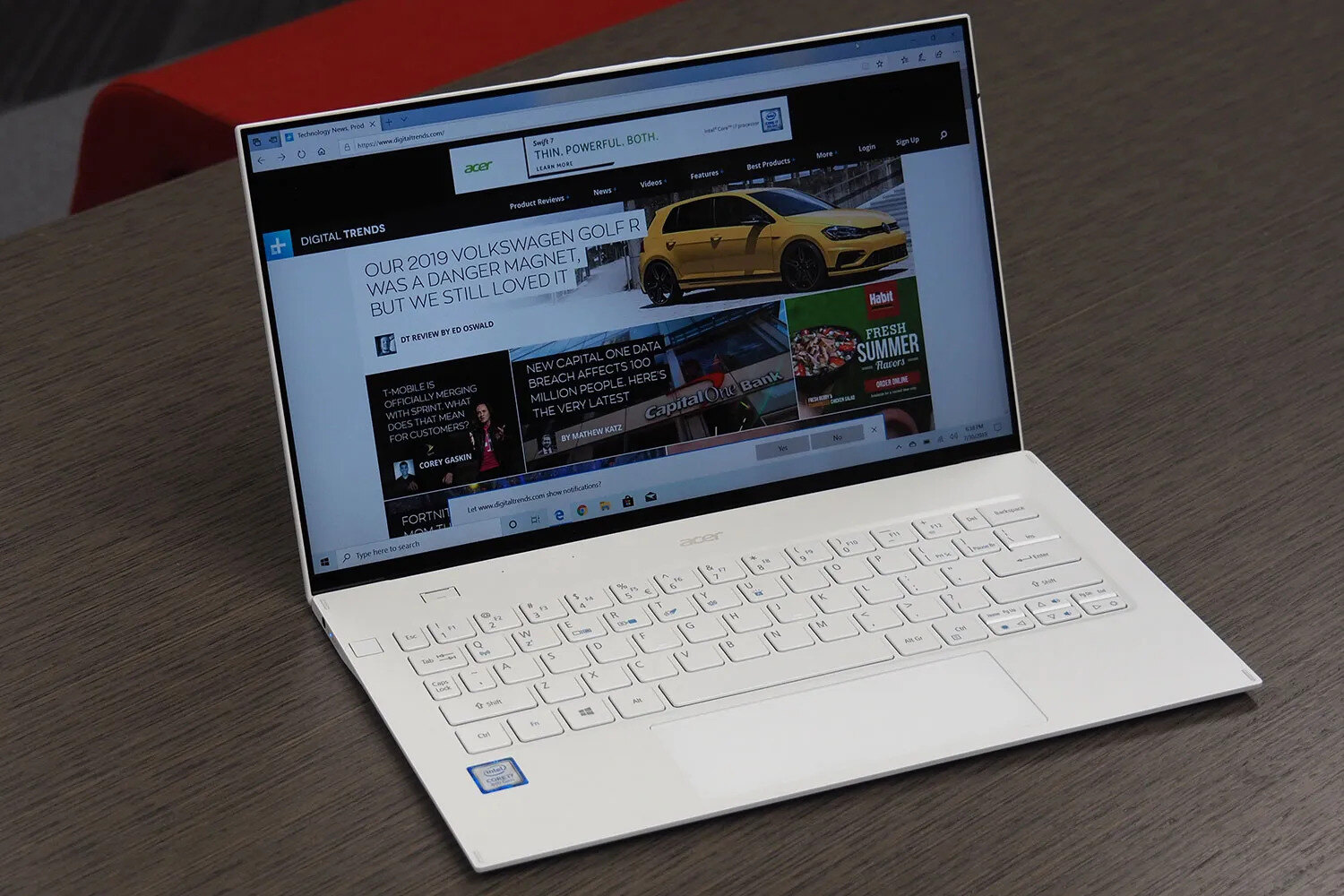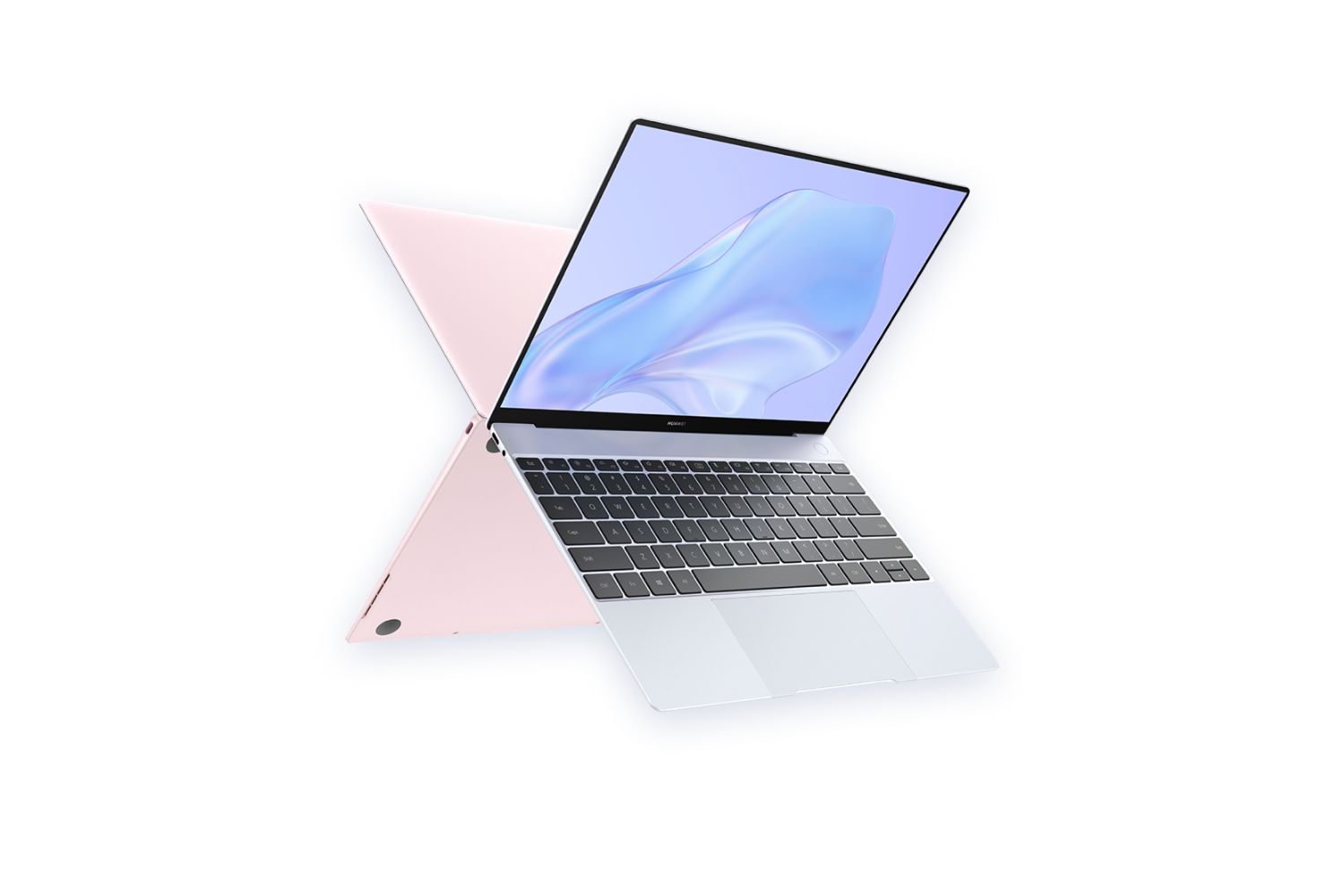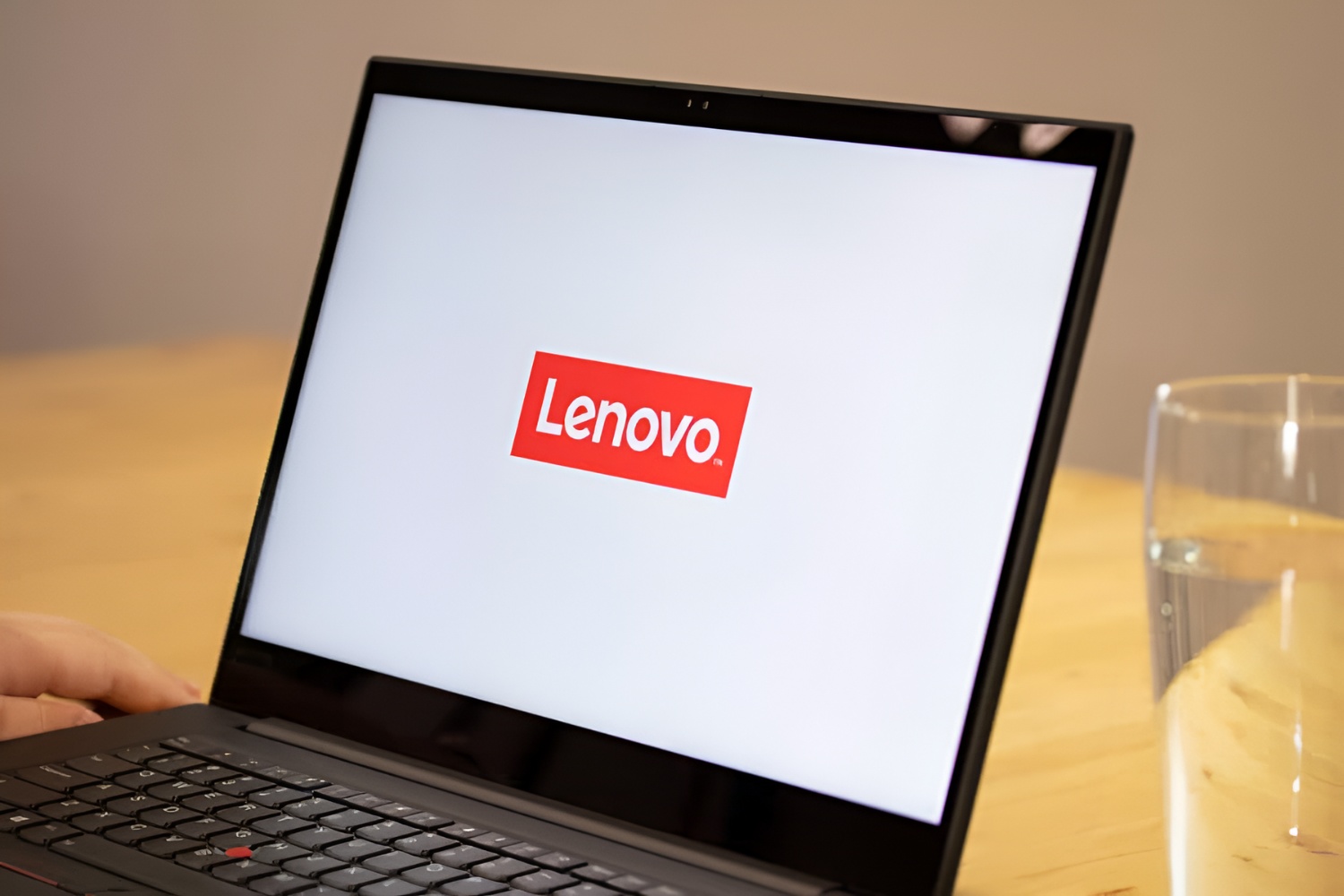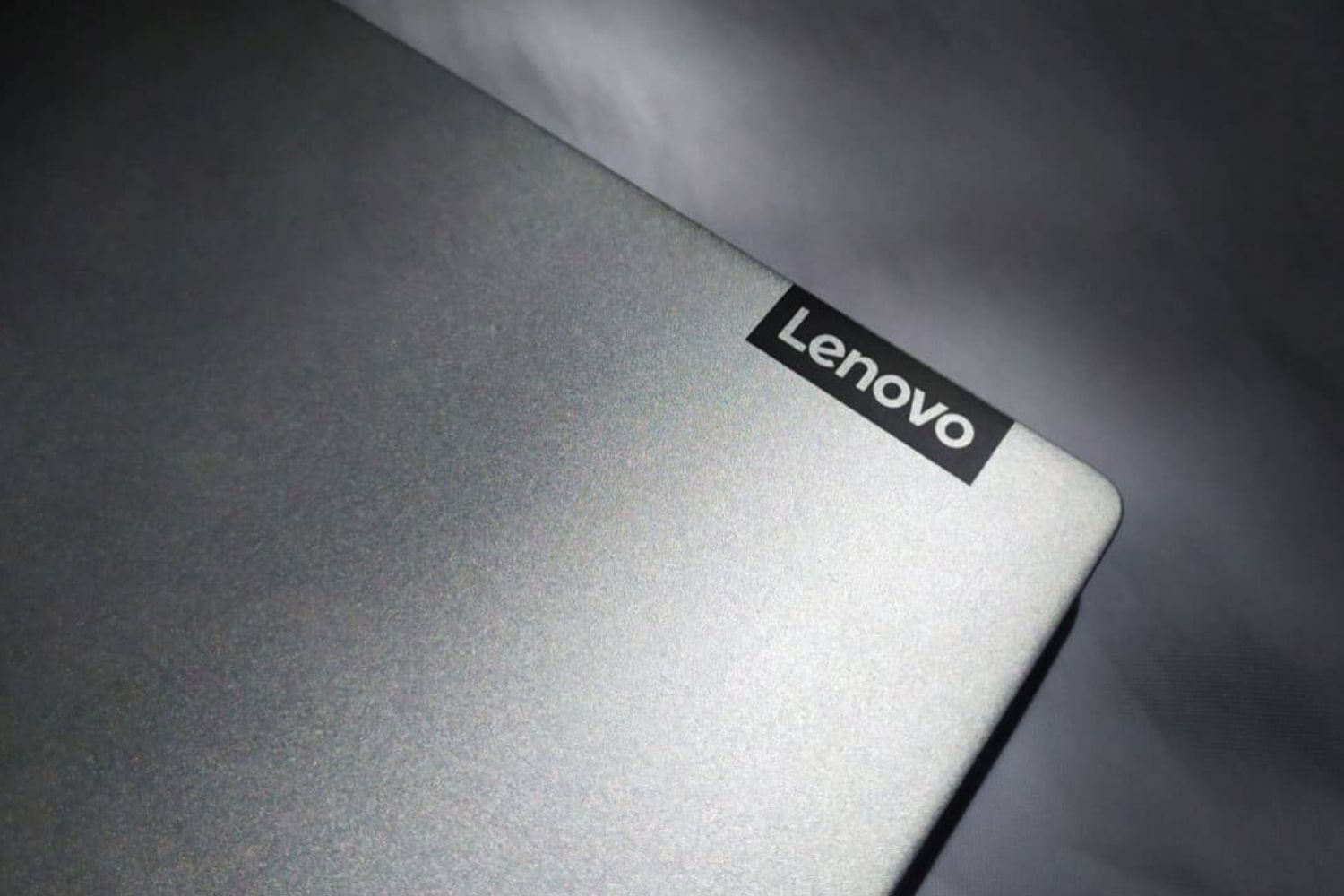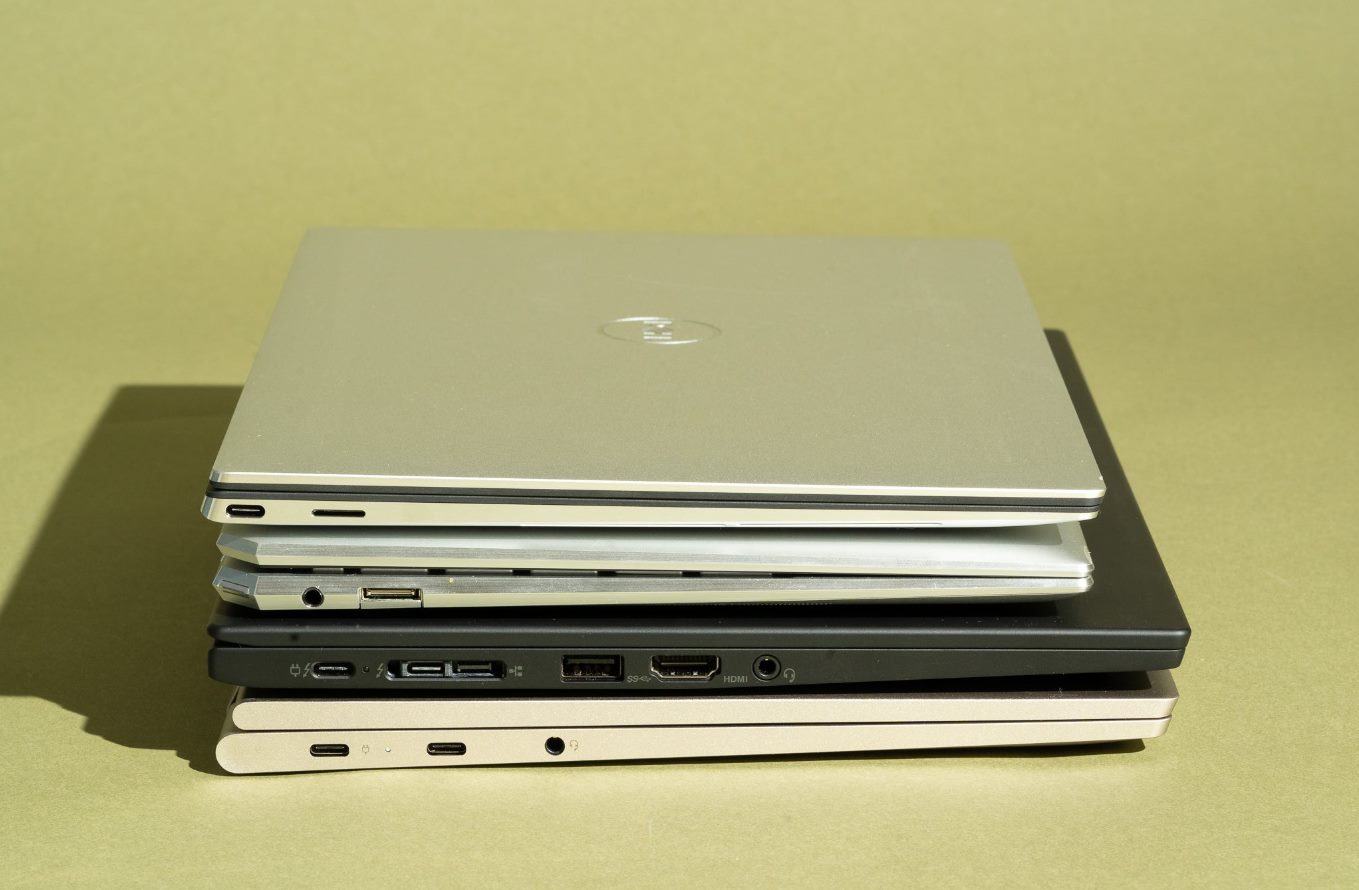Introduction
Welcome to this comprehensive guide on choosing the best Ultrabook. In today’s fast-paced world, having a lightweight and powerful laptop is essential for both productivity and entertainment purposes. Ultrabooks are designed to meet these needs by combining sleek designs, high-performance components, and long-lasting battery life. Whether you’re a student, a professional, or a casual user, finding the perfect Ultrabook can dramatically enhance your computing experience.
With a plethora of options available on the market, selecting the right Ultrabook can be a daunting task. That’s where this guide comes in. We will walk you through the essential factors to consider when choosing an Ultrabook, including processors and performance, display quality and size, battery life and portability, storage options and capacity, graphics capabilities, keyboard and trackpad, connectivity options, operating system choices, price range, and popular Ultrabook models.
Choosing the ideal Ultrabook requires careful consideration of your specific needs and preferences. Are you looking for a device that can handle resource-intensive tasks like video editing or gaming? Do you prioritize long battery life for on-the-go usage? Or perhaps, you prefer a vibrant and high-resolution display for immersive multimedia experiences. By understanding these requirements, you can make an informed decision that aligns with your daily workflow and entertainment needs.
Throughout this guide, we’ll provide valuable insights and recommendations to help you navigate the vast array of options available. Whether you’re a tech enthusiast hunting for the latest cutting-edge features or a budget-conscious consumer seeking the best value for your money, we’ve got you covered.
So, without further ado, let’s dive into the world of Ultrabooks and discover the must-know factors that will guide you towards finding the perfect match for your computing needs.
Factors to Consider When Choosing an Ultrabook
Choosing the right Ultrabook involves considering a variety of factors to ensure that it meets your specific requirements. In this section, we will discuss the key considerations that will help you make an informed decision.
- Processors and Performance: The processor is the brain of your Ultrabook, determining its speed and capabilities. Look for the latest generation Intel Core i5 or i7 processors for optimal performance, especially if you’ll be running resource-intensive tasks such as video editing or gaming.
- Display Quality and Size: The display is one of the most crucial aspects of a laptop. Opt for a high-resolution display with vivid colors and wide viewing angles. Consider the size as well – a larger display offers a more immersive experience, but it may also make the Ultrabook less portable.
- Battery Life and Portability: Ultrabooks are known for their long-lasting battery life, which is essential for users on the go. Look for a model with at least 8-10 hours of battery life to ensure it can keep up with your daily needs. Additionally, consider the weight and dimensions of the Ultrabook to ensure it’s portable enough for your needs.
- Storage Options and Capacity: Solid-state drives (SSDs) are the preferred storage option for Ultrabooks due to their speed and durability. Consider the capacity you’ll need for storing your files, applications, and media. If you require significant storage space, opt for a model with larger SSD or hybrid storage options.
- Graphics Capabilities: If you plan on gaming or working with graphic-intensive applications, consider an Ultrabook with dedicated graphics, such as NVIDIA GeForce or AMD Radeon. These GPUs will provide better performance for demanding tasks.
- Keyboard and Trackpad: A comfortable keyboard and responsive trackpad are essential for a seamless user experience. Look for a keyboard with well-spaced keys and good key travel. Additionally, ensure that the trackpad is accurate and supports multi-touch gestures.
- Connectivity Options: Depending on your needs, consider the available connectivity options. USB Type-C, HDMI, and Thunderbolt ports are useful for connecting peripherals and external displays. Additionally, check for Bluetooth and Wi-Fi compatibility to ensure seamless wireless connectivity.
- Operating System Choices: Ultrabooks generally come with either Windows, macOS, or Chrome OS. Consider your familiarity and requirements with each operating system and choose the one that best suits your needs.
- Price Range and Budget Considerations: Set a budget and consider the price range for Ultrabooks. Keep in mind that higher-end models often come with better performance and features, but they may also be more expensive. Consider your needs and prioritize the features that are most important to you within your budget.
By taking these factors into account, you’ll be able to narrow down your options and find an Ultrabook that perfectly aligns with your needs and preferences. Now, let’s delve deeper into each of these factors and explore the popular Ultrabook models available in the market.
Processors and Performance
When it comes to performance, the processor is a crucial component to consider when choosing an Ultrabook. It determines how fast and efficiently your device can handle tasks and applications. The processor’s performance directly affects multitasking capabilities, response times, and overall computing speed.
The most popular processors for Ultrabooks are from the Intel Core i5 and Core i7 series. These processors provide a good balance between power and battery efficiency, making them ideal for most users. The latest generation Intel processors, such as the 11th Gen Intel Core processors, offer even better performance and improved power efficiency.
For users who require exceptional performance for demanding tasks like video editing, gaming, or 3D rendering, opting for a higher-spec processor like the Intel Core i7 is recommended. It offers more processing cores and higher clock speeds, which can handle intensive tasks more efficiently.
When assessing processor performance, it’s important to consider factors such as clock speed, cache size, and the number of cores. A higher clock speed means faster processing, while a larger cache size improves data access speeds. More cores allow for better multitasking and improved performance when running multiple applications simultaneously.
It’s worth noting that while processor performance is crucial, it’s also essential to have adequate RAM (memory) to fully maximize the processor’s potential. Generally, Ultrabooks with 8GB or 16GB of RAM are recommended for smooth multitasking and optimal performance.
Intel isn’t the only processor manufacturer for Ultrabooks. AMD processors, especially the Ryzen series, offer competitive performance at a relatively lower price point. These processors provide excellent multi-threaded performance, making them suitable for tasks that benefit from multiple cores, such as video editing or 3D rendering.
In summary, when it comes to processors and performance, consider your usage requirements. For most users, an Ultrabook with an Intel Core i5 or i7 processor, coupled with sufficient RAM, will offer excellent performance for everyday tasks. Opt for a higher-spec processor if you have demanding workloads or if you’re a power user who frequently engages in resource-intensive activities.
Display Quality and Size
The display quality and size of an Ultrabook are essential factors to consider as they directly impact your visual experience and productivity. A high-quality display with vibrant colors, sharp resolution, and wide viewing angles can enhance your multimedia consumption, while a well-sized display can provide a comfortable workspace for productivity tasks.
When it comes to display quality, look for Ultrabooks with at least a Full HD (1920 x 1080) resolution. This resolution provides a crisp and clear display, allowing you to enjoy sharp text, detailed images, and vibrant colors. However, if you frequently work with creative or multimedia content, consider Ultrabooks with higher resolutions, such as QHD (2560 x 1440) or 4K (3840 x 2160), for more precise color representation and increased screen real estate.
In addition to resolution, consider aspects such as color accuracy, brightness levels, and contrast ratio. A display with accurate color reproduction offers more vibrant and true-to-life visuals, providing a better experience for tasks like photo editing or graphic design. Higher brightness levels ensure that the display remains visible even under bright ambient lighting conditions. A higher contrast ratio enhances the distinction between dark and light elements on the screen, resulting in more immersive and vivid visuals.
The size of the display is also important and largely dependent on personal preference and usage requirements. Most Ultrabooks come with displays ranging from 13 inches to 15 inches. A larger display provides more screen real estate, making it useful for multitasking, creative work, and media consumption. However, a larger display also means a bulkier and less portable Ultrabook. On the other hand, a smaller display offers greater portability and compactness, making it suitable for users who are constantly on the move.
Consider your usage patterns and find a balance between screen size and portability that suits your needs. If you frequently travel or prioritize portability, a 13-inch Ultrabook should suffice. However, if you require a larger workspace or work with content that benefits from a larger display, opt for a 15-inch Ultrabook.
Lastly, viewing angles are crucial in ensuring that the display remains visible from various positions without significant loss in color accuracy or contrast. In-plane switching (IPS) panels are known for their wide viewing angles, providing consistent visuals regardless of your viewing position. This is particularly useful when collaborating with others or sharing the screen during presentations.
In summary, when choosing an Ultrabook, prioritize a high-quality display with a resolution that meets your needs, accurate color reproduction, sufficient brightness levels, and a comfortable size that balances portability and productivity. Consider your usage requirements and personal preferences to select the Ultrabook with the best display for your needs.
Battery Life and Portability
Battery life and portability are crucial factors to consider when choosing an Ultrabook, especially if you often work on the go or travel frequently. The ability to use your device without constantly searching for power outlets is essential for productivity and convenience.
Ultrabooks are known for their excellent battery life, thanks to their energy-efficient components and optimized power management. When selecting an Ultrabook, look for models that offer a minimum of 8-10 hours of battery life. This ensures that you can use your device throughout the day without having to worry about running out of power.
Keep in mind that battery life can vary depending on factors such as display brightness, CPU usage, and the tasks you’re performing. Manufacturers often provide estimates based on regular usage, but actual battery life may differ. Reading customer reviews and expert opinions can provide a more realistic idea of the battery performance in real-world scenarios.
In terms of portability, Ultrabooks are designed to be thin, lightweight, and easy to carry. This makes them ideal for users who are constantly on the move or need a device that can be easily transported. Consider the weight and dimensions of the Ultrabook to ensure it fits your requirements.
Typically, Ultrabooks have screen sizes ranging from 13 to 15 inches. Smaller screen sizes generally result in more compact and lighter devices, while larger screens offer a more immersive experience but may sacrifice some portability. Consider your usage patterns and prioritize the right balance between screen size and portability that meets your needs.
Another factor that impacts portability is the build quality of the Ultrabook. Look for models with durable materials such as aluminum or magnesium alloy, as they offer a good balance of strength and weight. These materials ensure that your Ultrabook remains sturdy while being lightweight and portable.
Consider the presence of features like a backlit keyboard, fingerprint reader, or face unlock that can enhance usability and convenience. These features can make a significant difference, especially when using your Ultrabook in different lighting conditions or for quick and secure authentication.
Lastly, pay attention to the availability of charging options and compatibility. Some Ultrabooks support fast charging, allowing you to quickly recharge your battery in a short period. Additionally, check for compatibility with charging standards like USB Power Delivery, which enables charging using a variety of USB-C power adapters.
In summary, prioritize an Ultrabook with good battery life to ensure uninterrupted usage throughout the day. Consider the portability of the device, including weight, dimensions, build quality, and the presence of convenient features. Finding the right balance between battery life and portability will allow you to work efficiently on the go without compromising on convenience.
Storage Options and Capacity
Storage is a crucial consideration when choosing an Ultrabook, as it determines how much data you can store and access on your device. Ultrabooks typically make use of solid-state drives (SSDs), which offer faster performance and better durability compared to traditional hard disk drives (HDDs).
When it comes to storage capacity, the range of options can vary depending on the specific Ultrabook model. Entry-level models often come with 128GB or 256GB of storage, which is suitable for basic tasks and storing essential files. If you require more space for applications, multimedia files, or large datasets, consider upgrading to 512GB or 1TB of storage. Some Ultrabooks even offer up to 2TB of storage for users with extensive storage needs.
Aside from capacity, consider the type of SSD used in the Ultrabook. Look for models that utilize PCIe NVMe SSDs rather than SATA-based SSDs, as the former offers significantly faster read and write speeds. This translates to faster boot times, quicker application launches, and smoother overall performance.
In addition to primary storage, some Ultrabooks may also offer secondary storage options. These can include additional M.2 slots or microSD card slots for expandable storage. This can be particularly useful if you work with large files or need to store media libraries.
It’s also worth mentioning the emerging trend of hybrid storage options in some Ultrabooks. These combine the benefits of SSDs with the larger storage capacity of traditional HDDs. The SSD serves as the primary storage for faster access to frequently used data, while the HDD offers additional capacity for less frequently accessed files. This hybrid storage setup provides a good balance between speed and space, making it an attractive option for users with diverse storage needs.
When considering storage options, think about your specific requirements. If you primarily rely on cloud storage or external drives for file storage, a lower capacity SSD might suffice. However, if you work with large files or prefer to have all your data stored locally, opt for a higher capacity SSD or consider models with expandable storage options.
In summary, prioritize an Ultrabook with sufficient and fast storage options that align with your storage needs. Consider the capacity, type of SSD, and the availability of expandable or hybrid storage options. Finding the right balance between capacity and performance will ensure that you can store and access your data seamlessly on your Ultrabook.
Graphics Capabilities
Graphics capabilities play a significant role in determining the visual performance of an Ultrabook, especially if you plan on gaming, working with graphic-intensive applications, or simply enjoying high-definition multimedia content.
When it comes to graphics, there are two main types to consider: integrated graphics and dedicated graphics. Integrated graphics are built into the processor and provide a basic level of graphical performance. They are suitable for everyday tasks such as web browsing, document editing, and multimedia playback.
However, if you require more power for demanding tasks like gaming or professional design work, dedicated graphics is a better option. Dedicated graphics chips, such as NVIDIA GeForce or AMD Radeon, offer enhanced performance and can handle graphically intensive applications more efficiently.
When selecting an Ultrabook with dedicated graphics, consider the specific GPU model and its capabilities. Higher-end models offer more processing power and memory, which results in better performance and the ability to handle more demanding tasks.
Additionally, if you plan on gaming on your Ultrabook, it’s important to check the GPU’s compatibility with the games you intend to play. Many modern games have specific graphics requirements, and checking the recommended or required specifications can help ensure a smooth gaming experience.
It’s worth noting that dedicated graphics can impact battery life, as they consume more power compared to integrated graphics. If you prioritize battery life and don’t require intense graphical capabilities, an Ultrabook with integrated graphics may be more suitable.
Ultrabooks equipped with dedicated graphics often provide additional features such as VR (virtual reality) support or external display connectivity options. If you’re interested in exploring VR content or have a need for multiple displays, ensure that the Ultrabook you choose supports these features.
In summary, consider your graphical requirements when choosing an Ultrabook. If your tasks include gaming, graphic design, or any other visually demanding applications, look for an Ultrabook with dedicated graphics. Assess the specific GPU model, its capabilities, and compatibility with your intended usage. Strike a balance between graphical performance and battery life depending on your preferences and needs.
Keyboard and Trackpad
The keyboard and trackpad are critical components of an Ultrabook, as they directly impact your typing experience and overall usability. A comfortable, responsive keyboard and a reliable trackpad are essential for a seamless user experience.
When evaluating the keyboard, factors such as key spacing, key travel distance, and tactile feedback should be considered. Look for a keyboard with well-spaced keys that offer a satisfying typing experience. A shallow or spongy keyboard can hinder your productivity and make typing more cumbersome. Additionally, backlit keyboards can be advantageous, especially when working in low-light environments.
Key travel distance refers to how far a key needs to be pressed for a keystroke to register. A deeper key travel can provide better feedback and a more satisfying typing experience. However, some Ultrabooks compromise key travel for slimness and portability. It’s important to strike a balance between a compact form factor and a comfortable typing experience based on your preferences.
Another essential component is the trackpad. It should be accurate, responsive, and support multi-touch gestures for smooth navigation. Look for models with precision trackpads that provide accurate cursor control, making tasks like browsing the web or editing documents more efficient.
In addition to responsiveness, consider the size and material of the trackpad. A larger trackpad offers more room for gesture controls, making it easier to navigate through applications or documents. Glass trackpads are generally smoother and more comfortable to use compared to plastic ones.
Some Ultrabooks feature additional features like a fingerprint reader integrated into the trackpad for convenient and secure login. This allows you to quickly and securely authenticate yourself without having to remember complex passwords.
It’s also worth noting that some Ultrabooks offer a touch-enabled display, allowing you to interact directly with the screen. This can be beneficial for tasks such as drawing, sketching, or utilizing touch-based applications. However, it’s important to ensure that the touch input is responsive and accurate for a seamless user experience.
In summary, prioritize an Ultrabook with a comfortable and responsive keyboard for an optimal typing experience. Consider key spacing, key travel distance, and backlit options based on your preferences. Additionally, look for a trackpad that provides accurate cursor control, supports multi-touch gestures, and is of suitable size and material. Features like fingerprint readers or touch-enabled displays can further enhance usability, depending on your specific needs.
Connectivity Options
Connectivity options are an essential consideration when choosing an Ultrabook, as they determine the versatility and compatibility of your device with various peripherals and external devices.
One of the most important connectivity options to look for is USB ports. USB Type-C ports are increasingly common in Ultrabooks, offering fast data transfer speeds and the ability to connect a wide range of devices. Consider the number of USB ports available and ensure they support the USB version you require.
Additional USB-A ports are still widely used and can be useful for connecting older peripherals such as keyboards, mice, or external hard drives. Having a mix of both USB Type-C and USB-A ports provides flexibility for various devices without the need for adapters.
HDMI or DisplayPort connectivity is essential for connecting your Ultrabook to external displays or projectors. These ports allow you to extend your workspace, present slideshows, or watch multimedia content on larger screens. Check the supported resolution and refresh rates to ensure compatibility with your display requirements.
Another useful connectivity option is Thunderbolt, which offers high-speed data transfer along with support for video output, power delivery, and daisy-chaining multiple devices. Thunderbolt ports are particularly beneficial for users who work with high-bandwidth devices like external storage drives or professional-grade displays.
In addition to wired connections, wireless connectivity is essential for seamless connectivity on the go. Look for Ultrabooks that support the latest Wi-Fi standards (such as Wi-Fi 6) for faster and more reliable wireless internet connections. Bluetooth compatibility is also important for connecting wireless peripherals like mice, keyboards, or headphones.
Consider the availability of an Ethernet port if you require a wired internet connection. While many Ultrabooks do not feature built-in Ethernet ports, you can use a USB-to-Ethernet adapter for a wired connection when needed.
Some Ultrabooks may also offer additional connectivity options such as an SD card reader, which can be useful for photographers or video editors who frequently transfer media files from cameras or other devices.
Lastly, for users who require biometric security, consider Ultrabooks equipped with a fingerprint reader for convenient and secure login. This allows you to quickly and securely authenticate yourself without having to rely solely on passwords.
In summary, prioritize an Ultrabook with a diverse range of connectivity options that align with your specific needs. Consider the availability of USB Type-C and USB-A ports, HDMI or DisplayPort connectivity, Thunderbolt support, and wireless connectivity options like Wi-Fi and Bluetooth. Additional features like an Ethernet port or an SD card reader may also be beneficial depending on your usage requirements.
Operating System Choices
When choosing an Ultrabook, one of the key decisions you’ll need to make is selecting the operating system (OS) that best suits your needs and preferences. The operating system defines the user interface, software compatibility, and overall functionality of your device.
Three primary operating systems dominate the Ultrabook market: Windows, macOS, and Chrome OS. Each has its own unique features and benefits, so it’s crucial to understand their differences before making a decision.
Windows: Windows is the most commonly used operating system for Ultrabooks. It offers a diverse range of software compatibility, making it suitable for a variety of applications and tasks. Windows provides a user-friendly interface and an expansive selection of productivity tools, professional software, and gaming options. It also offers customization options and extensive hardware support, allowing you to choose from a wide variety of Ultrabook models.
macOS: macOS is the operating system exclusive to Apple’s MacBook lineup. It boasts a sleek and user-friendly interface known for its seamless integration with Apple’s ecosystem of products and services. macOS is known for its stability, security, and performance optimization, making it an excellent choice for creative professionals, educators, and users who value simplicity and a cohesive ecosystem.
Chrome OS: Chrome OS is a lightweight operating system developed by Google. It is designed primarily for users who rely on web-based applications and cloud storage. Chrome OS provides a fast, secure, and simplified computing experience, with seamless integration with Google’s suite of productivity tools. This makes it a popular choice for users who prioritize web browsing, email, media consumption, and online collaboration.
When deciding on an operating system, consider your familiarity with the ecosystem, the software applications you rely on, and your workflow requirements. The operating system should align with your needs, allowing you to be productive and efficient in your daily tasks.
It’s worth noting that some Ultrabooks offer the option of dual-booting or running multiple operating systems. This allows you to experience the benefits of different operating systems and switch between them based on your requirements.
Before making a final decision, it’s advisable to research and test the operating systems if possible. Take into account factors such as software compatibility, user interface preferences, and the availability of updates and support.
In summary, carefully consider the operating system options available for Ultrabooks – Windows, macOS, and Chrome OS. Evaluate their features, compatibility with your preferred software, user interface preferences, and overall ecosystem integration. Select the operating system that best suits your needs, maximizing your productivity and enhancing your computing experience.
Price Range and Budget Considerations
When considering an Ultrabook, setting a budget and understanding the price range for these devices is crucial. Ultrabooks typically offer a premium computing experience, with high-end components and sleek designs. However, there is a wide range of options available, catering to different budgets and price points.
The price of an Ultrabook is influenced by various factors, including the brand, specifications, build quality, and additional features. Generally, higher-end Ultrabooks with the latest processors, larger RAM capacity, higher-resolution displays, and dedicated graphics tend to be more expensive.
It’s important to establish a budget and prioritize the features that are most important to you. Determine your usage requirements and consider the tasks you’ll be performing regularly. This will help you identify the necessary specifications for your Ultrabook, enabling you to find the best balance between performance and price.
Keep in mind that while higher-priced Ultrabooks may offer cutting-edge features and superior performance, they may also exceed your budget. Conversely, lower-priced options may have more modest specifications, but they can still deliver a satisfactory computing experience for everyday tasks.
Consider the longevity and future-proofing of your investment. Spending a little more for a better processor, ample storage, and sufficient RAM may help ensure that your Ultrabook can handle future software updates and demanding applications. However, it’s also essential to consider your needs within the present moment and avoid overspending on features that you won’t fully utilize.
Researching customer reviews, expert opinions, and comparing prices across different retailers can help you find the best value for your budget. Look for deals, discounts, and promotions that may be available, especially during holiday seasons or special sales events.
It’s also worth considering manufacturer warranties, customer support, and any extended warranty options available. These factors contribute to the overall value and peace of mind when purchasing an Ultrabook.
In summary, establish a budget based on your financial constraints and prioritize the features that align with your needs. Consider the long-term viability of your investment and aim to strike a balance between performance and price. Research, compare prices, and take advantage of available deals to find an Ultrabook that offers the best value within your budget.
Popular Ultrabook Models and Their Features
There are numerous Ultrabooks available on the market, each offering a unique set of features and specifications. In this section, we will highlight some popular Ultrabook models and discuss their standout features.
1. Dell XPS 13: The Dell XPS 13 is a highly regarded Ultrabook known for its impressive build quality and stunning InfinityEdge display. It features a compact yet immersive 13.3-inch display with slim bezels, offering a near-borderless viewing experience. The XPS 13 is available with various configurations, including powerful processors, ample RAM, and fast storage options.
2. MacBook Air: Apple’s MacBook Air is a popular choice among users who prefer the macOS ecosystem. This Ultrabook is known for its slim design, long battery life, and crisp Retina display. The MacBook Air features Apple’s custom M1 chip, which delivers excellent performance and impressive efficiency. It also offers a comfortable keyboard and a reliable trackpad for a seamless user experience.
3. HP Spectre x360: The HP Spectre x360 is a versatile 2-in-1 Ultrabook that combines elegance with functionality. It features a 360-degree hinge, allowing it to transform from a traditional laptop to a tablet or tent mode. The Spectre x360 offers a vibrant display, powerful processing options, and an exceptional keyboard and trackpad. It also boasts a sleek design with diamond-cut edges and a lightweight build.
4. Lenovo ThinkPad X1 Carbon: The ThinkPad X1 Carbon is a business-oriented Ultrabook known for its durability, reliability, and renowned ThinkPad keyboard. It features a carbon fiber chassis that is both lightweight and sturdy. The X1 Carbon offers an excellent selection of processors, ample RAM, and high-resolution display options. It also prioritizes security with built-in fingerprint readers and webcam covers.
5. ASUS ZenBook 14: The ASUS ZenBook 14 is a compact and portable Ultrabook that boasts a lightweight design and excellent battery life. It offers a 14-inch display with slim bezels, delivering a larger screen in a smaller form factor. The ZenBook 14 features a powerful processor, ample RAM, and fast SSD storage options. It also includes a discrete graphics card for users who require additional graphics performance.
6. Microsoft Surface Laptop: The Microsoft Surface Laptop is a sleek and highly portable Ultrabook designed with productivity in mind. It features a premium build quality and a vibrant PixelSense display. The Surface Laptop offers various configurations, including Microsoft’s own processors, providing a balance between performance and efficiency. It also features a comfortable keyboard and a responsive trackpad.
These are just a few examples of the popular Ultrabook models available. It’s important to conduct thorough research and consider your specific needs to find the Ultrabook that best matches your requirements in terms of performance, design, portability, and features. Additionally, keep an eye on new releases and advancements in Ultrabook technology, as manufacturers continually introduce innovative models with updated specifications and features.
Conclusion
Choosing the best Ultrabook involves careful consideration of various factors to ensure it aligns with your specific needs and preferences. By evaluating key aspects such as processors and performance, display quality and size, battery life and portability, storage options and capacity, graphics capabilities, keyboard and trackpad, connectivity options, operating system choices, price range, and popular Ultrabook models, you can make an informed decision that enhances your computing experience.
Processors and performance play a vital role in determining the speed and efficiency of your Ultrabook. Consider the latest generation Intel Core i5 or i7 processors or AMD Ryzen processors for optimal performance. The display quality and size impact your visual experience, with higher resolutions and vibrant colors leading to a more immersive viewing experience. Battery life and portability are crucial for users who are constantly on the go, ensuring uninterrupted usage throughout the day without compromising on flexibility. Storage options and capacity determine how much data you can store on your Ultrabook, so consider the available SSD capacity and expandability options based on your storage needs.
Graphics capabilities are important for gaming, graphic design, or any visually demanding tasks. Dedicated graphics provide superior performance, while integrated graphics are suitable for everyday tasks. The keyboard and trackpad should be comfortable and responsive, enabling an enjoyable and efficient typing experience. Connectivity options should include USB Type-C and USB-A ports, HDMI or DisplayPort for external display connectivity, and wireless connectivity like Wi-Fi and Bluetooth for seamless wireless communication. The choice of operating system, whether it’s Windows, macOS, or Chrome OS, should depend on your familiarity, software compatibility, and ecosystem preferences.
Ultimately, your budget and price range will influence the options available to you. Consider the features and specifications that are most important to you within your budget, and compare different Ultrabook models to find the best value for your money. Moreover, popular Ultrabook models like the Dell XPS 13, MacBook Air, HP Spectre x360, Lenovo ThinkPad X1 Carbon, ASUS ZenBook 14, and Microsoft Surface Laptop offer a range of standout features that cater to different user preferences and needs.
In conclusion, finding the best Ultrabook requires careful evaluation of these factors and an understanding of your specific requirements. By considering all the aspects discussed in this guide, you can confidently choose an Ultrabook that provides the perfect balance of performance, design, and functionality to meet your computing needs.







